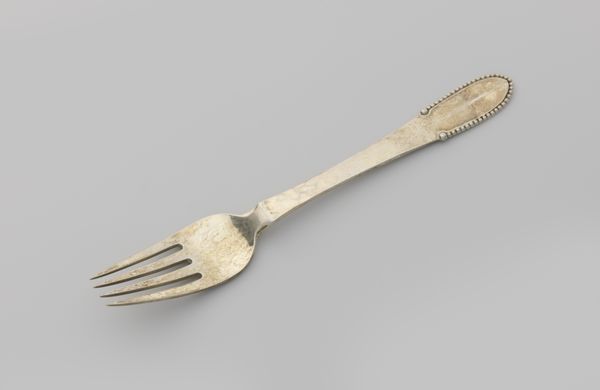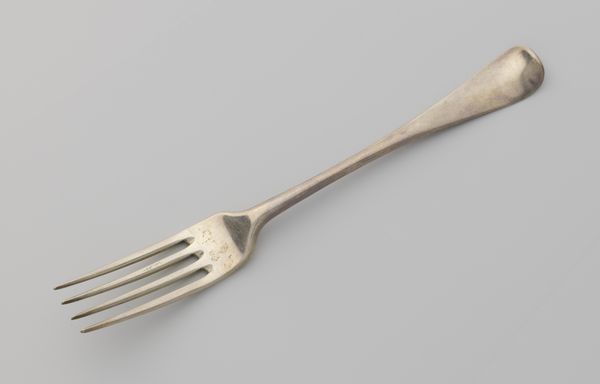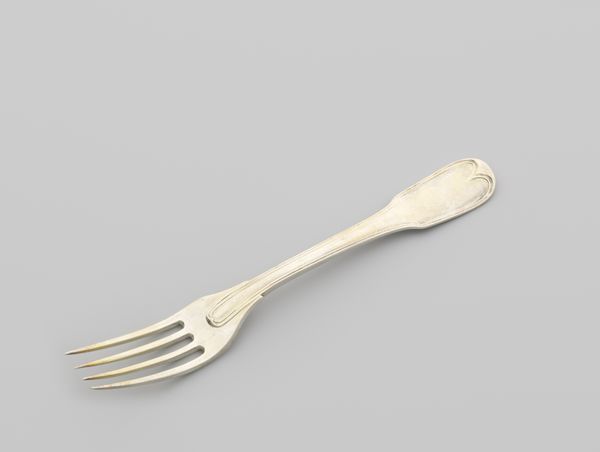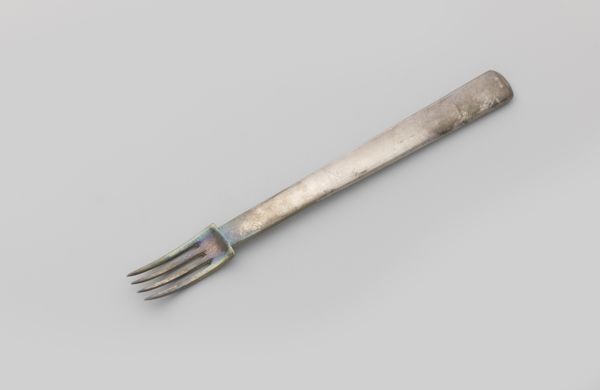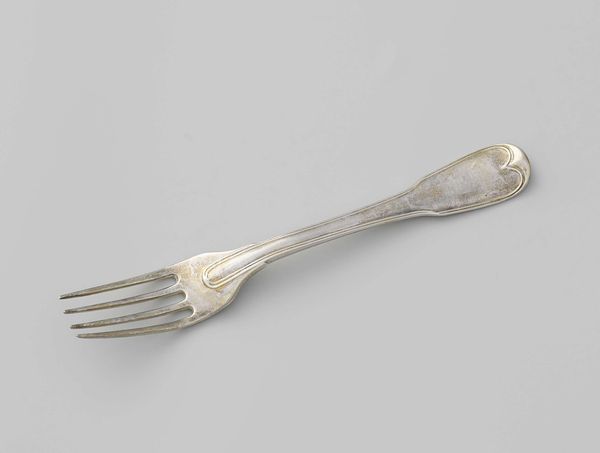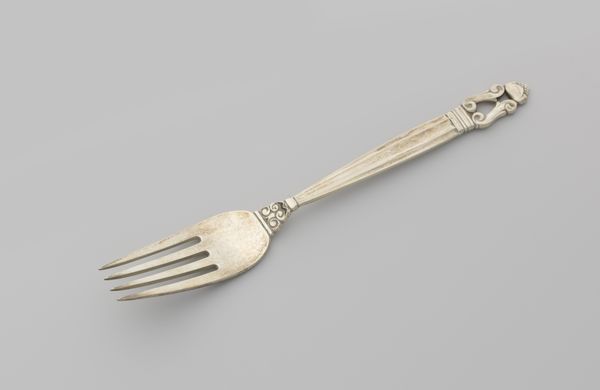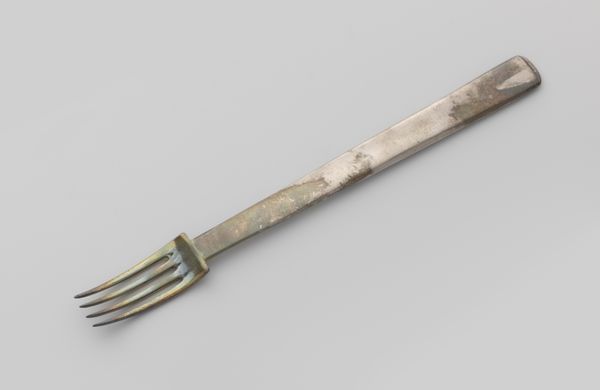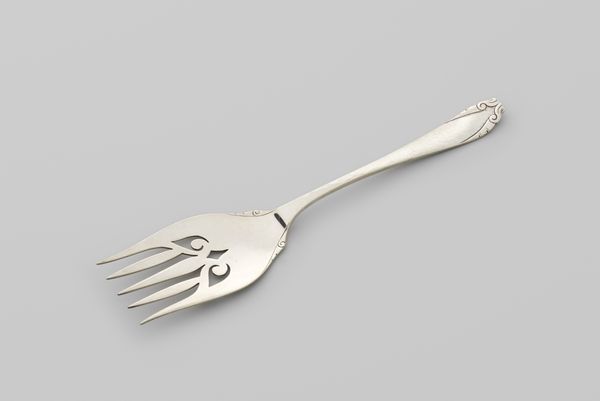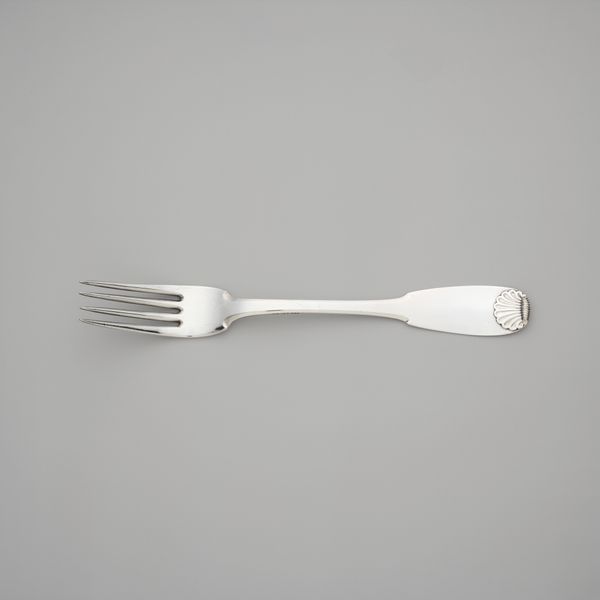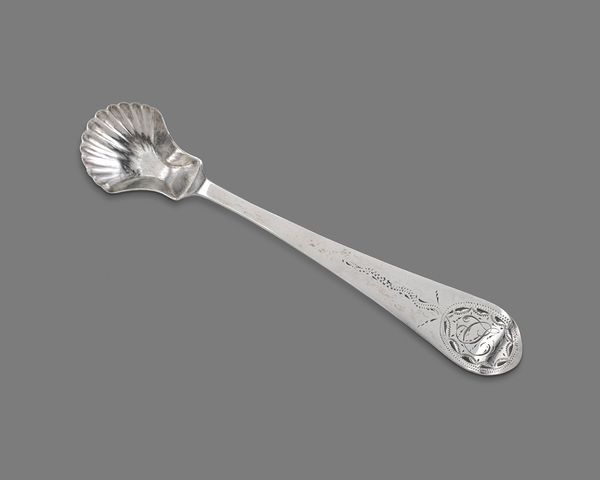
Dimensions: length 16.9 cm, width 1.9 cm, depth 0.8 cm, weight 48.0 gr
Copyright: Rijks Museum: Open Domain
Curator: Looking at this image, I find myself immediately drawn to the clean, almost austere lines of the silver fork. There's a certain modernist sensibility that resonates, despite its likely earlier origins. Editor: Indeed. This is "Vork van zilver", or "Silver Fork", produced circa 1925 by the Wiener Werkstätte. Examining such everyday objects through the lens of social history unveils a great deal. We start to see dining, taste, and domesticity represented through the power of design. Curator: I agree, seeing as how the Wiener Werkstätte were all about democratizing design and placing emphasis on handcrafted, well-designed items accessible across social strata. How was this ideal practically applied here? Editor: The fork's geometric handle hints at Art Nouveau, while still signaling towards a move away from ostentation—an artistic style that reflects a society recovering from war and navigating economic uncertainty. It emphasizes functional elegance, speaking to evolving social values. Curator: It's a subtle statement piece then; something one could own to silently showcase values such as the owner's embrace of modern sensibilities alongside functionality during a period of dramatic change. It speaks volumes, considering its humble size and purpose. Editor: Exactly. And the fact it is rendered in silver underscores the changing concept of luxury and who gets access to beauty, fine craft and art. No longer is it just royal houses and their circles who can procure items produced in fine metal. The rise of industrial production allowed these designs to become more accessible to broader sections of society, disrupting traditional power structures linked to luxury and artistic patronage. Curator: Thinking of luxury differently has opened a dialogue about wealth inequality as we progress. Its history really forces us to think about design, power and access. Editor: It has indeed. Examining this silver fork pushes us to think critically about the past while contemplating where art, design, and their impact intersect today.
Comments
No comments
Be the first to comment and join the conversation on the ultimate creative platform.
